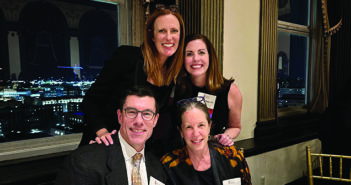Why are lung cancer screening rates so low, and what could improve them?
The US Preventive Services Task Force recently loosened the eligibility criteria for lung cancer screening, meaning far more people can be tested. Yet nationwide, just 6 percent of those eligible get screened. Hina Khan, MD, an assistant professor of medicine and a medical oncologist who specializes in thoracic cancers, says there are several reasons for this—and ways to overcome it.
Lung cancer is the second most common cancer in the US and the leading cause of cancer death. Unfortunately, that is because almost 60 percent of all lung cancers are diagnosed at later stages, when it has already metastasized. Compared to white Americans, people of color tend to have higher rates of lung cancer but lower rates of screening and lower survival rates.
Screening with a low-dose CT scan reduces the risk of death from the disease by 20 percent—but there are numerous barriers. Primary care providers may be unfamiliar with the eligibility criteria—patients must be 50 to 80 years old; be current smokers or have quit in the last 15 years; and have 20 pack years or more, the equivalent of a pack a day for 20 years—or insurance coverage. Providers may have insufficient time to discuss lung cancer screening due to competing health priorities—especially after the pandemic delayed many primary care visits.
A lot of patients do not know there is such a thing as lung cancer screening, with many reporting that their physician never discussed it with them. Many patients also don’t know that their insurance covers this screening. Fear of a cancer diagnosis or the stigma of smoking also hold people back. There are logistical challenges, like transportation, and language and cultural barriers.
I am leading a study in Providence, Central Falls, and Pawtucket that is already showing that a patient navigator program at community health centers can improve rates of lung cancer screening through education and logistical support. And this spring, we launched a multidisciplinary lung cancer screening program at The Miriam Hospital, where screening and nodule management happen in one place. The good news is, lung cancer deaths are declining, five-year survival rates are improving, and smoking rates are falling. But we have a long way to go.




